Targeting 'The Last Frontier': Mexican cartels send drugs into Alaska, upping death toll
ANCHORAGE, Alaska ― The infamous Sinaloa Cartel, once headed by notorious kingpin "El Chapo," and others in Mexico are targeting Alaska with drug pipelines, driving up the overdose death toll.
It's difficult to reach much of the remote state, so there are fewer criminal networks competing for customers, but that means drug traffickers can triple or quadruple their price and net much larger profits.
"All the drug dealers are aware they can make more money selling drugs in Alaska," said James Klugman, head of federal criminal prosecutions for Alaska's U.S. Attorney's Office.
Deadly fentanyl and other illegal narcotics continue saturating the urban centers of Anchorage, as well as Juneau to the east and Fairbanks to the north. From those main hubs, shipments are dispersed far and wide, stretching from tiny islands off the southern coast all the way up to the Arctic region, according to state and federal police.
To the west, drugs have pummeled small villages in Bethel and Nome, known as the final stop on the historic Iditarod dog sled race.
"An amount of drugs that wouldn't even move the needle in big cities like Los Angeles or New York can completely change the life of an entire community in Alaska," Klugman said.
Drugs have spread to every corner of the state, even to villages of 50 people or less, said Brandon Waddle, assistant special agent in charge of the Federal Bureau of Investigation's field office in Anchorage.
"What keeps me up at night is the fact that fentanyl is killing our small, most vulnerable communities," he said. "The opioid crisis is attacking us, and we don't have enough personnel to effectively combat it."
Alaska suffered the nation's largest percent increase in overdose deaths in 2021, with a 75% spike from the previous year, adding to the nation's estimated death toll of nearly 107,000, according to the Centers for Disease Control and Prevention. The CDC reported Alaska's overdose death rate jumped in one year from 20.2 to 35.6 per 100,000 residents.
About 76% of the 253 fatal overdoses in Alaska in 2021 involved synthetic narcotics, including fentanyl, according to a report by the Governor's Advisory Council on Opioid Remediation.
The Louisville Courier Journal, part of the USA TODAY Network, reviewed several drug cases and spent nearly two weeks in parts of Alaska, talking with grieving parents, residents in addiction recovery, Alaska Native advocates, health officials, defense attorneys, as well as local, state and federal law enforcement.
Fishermen, hikers, hunters and cruise ship enthusiasts are drawn to the snow dusted mountains, the blue tinted glaciers, fjords, glassy glacier lakes and salmon-rich waters in the nation's largest state. But its vastness and landscape make it hard to patrol.
"The opioid crisis has hit hard, and it's hit close to me," said Cornelius Sims, a lieutenant with the Alaska State Troopers and supervisor of a statewide drug task force. "I have had family members become addicted. I have lost close friends.
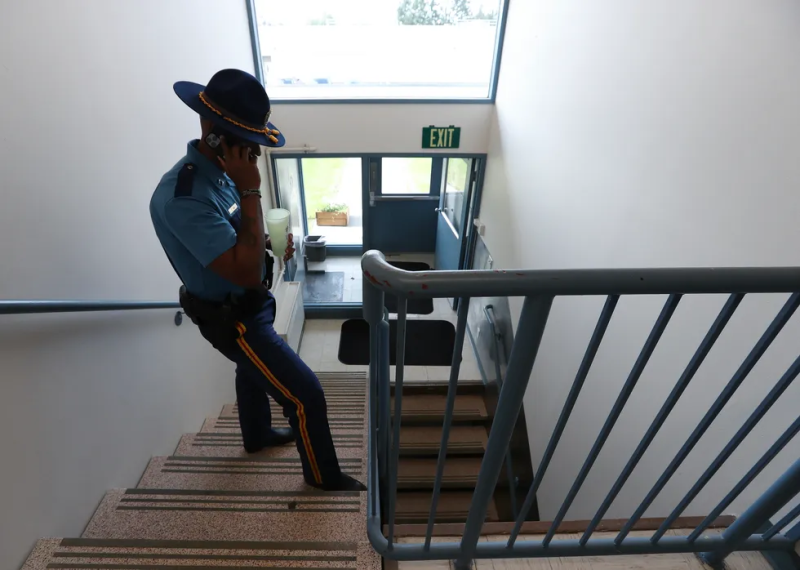
"I've seen very vibrant, positive, outgoing individuals from good upbringings go from that to living on the streets homeless, doing whatever they can to survive."
During the past few years, fentanyl began to permeate Alaska, and many customers started seeking it out, Waddle said. In Alaska, and across the nation, it's now most commonly peddled in fake prescription pills that mimic the appearance of legitimate medication for pain or other conditions.
Alaska has about 734,000 residents spread out over a land mass that's two and a half times the size of Texas and larger than America's next three largest states ― Texas, California and Montana ― combined.
And there are hundreds of small villages only accessible by small planes. For many, snowmobiles replace cars during the winter. The further drug dealers have to travel, the more they charge.
Traffickers have taken the extra steps needed to get their product to the tiny, out-of-the-way town of Whittier, 60 miles southeast of Anchorage and near the popular Portage Glacier. Most of Whittier's 270 residents live across from the harbor under one roof, in a 14-story pastel-colored building, also home to the police department, library, church, convenience store and post office. It previously served as an Army barracks.
It takes about 80 minutes to drive there from Anchorage on Seward Highway, as long as a moose doesn't wander into the road and stop traffic. But drivers have to plan their visit, paying a $13 toll to access the tunnel leading into town and waiting until half past each hour for a turn using the one-lane tunnel. You can leave the city only at the top of each hour, because tunnel traffic alternates directions and is shared by cars and a passenger train.
The extra effort exemplifies the determination of greedy drug dealers.
A Mexican trafficker established a drug network several years ago in Girdwood, a small town between Whittier and Anchorage that's known for its posh ski resort and tram. Jorge Cardenas and his crew blanketed the area with meth and introduced customers to fentanyl. Since drug trends in Alaska tend to lag behind the Lower 48, or contiguous U.S., by a few years, police say this was one of the first cases of its kind in Alaska.
Cardenas admitted creating what he called "gunpowder heroin" by lacing heroin with fentanyl, now the top drug killing Americans. He took advantage of customers who didn't realize the dangers of fentanyl, and his network expanded to Juneau and Anchorage. While searching his family's home, agents found a shrine to Jesús Malverde, known as the "Patron Saint of Drug Dealers" or the "narco saint."
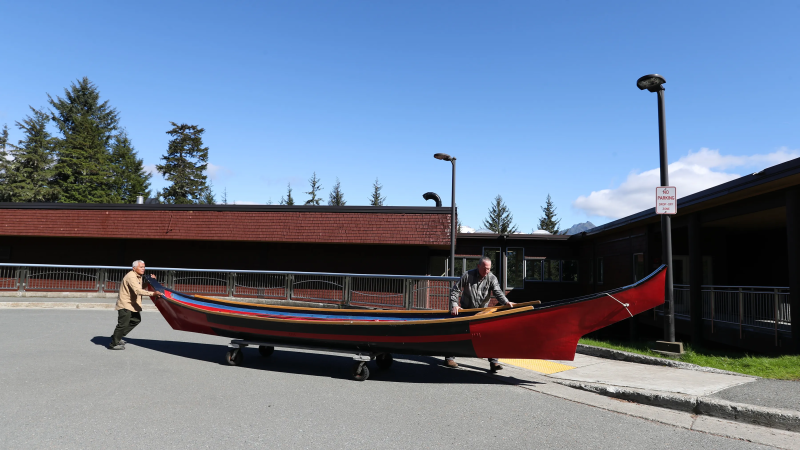
From Mexico, north up the West Coast
In Alaska, most drug shipments first arrive in the major hub of Anchorage, the state's largest city with more than 287,000 residents, nearly 40% of the Alaska's population.
One major drug pipeline sent heroin, meth and cocaine from Mexico into Arizona and then onward to Anchorage.
In a recent case still in court, alleged kingpin Miguel Baez Guevara is charged with targeting Alaska with a pipeline for years while hiding out in Sonora, a northwest Mexican state bordered by Arizona. Federal agents were looking for Guevara, who maintains his innocence and is awaiting trial, on a separate 2014 drug case out of Arizona when he fled across the border.
More:A healing culture: Alaska Natives use tradition to battle influx of drugs, addiction
He is charged with heading the drug ring to Alaska without ever stepping foot in the state.
Mexican immigration officials found and arrested Guevara, a U.S. citizen, in 2021 and deported him to America.
"Guevara made it known he was associated with the Sinaloa Cartel and there were serious and violent repercussions for couriers who stole narcotics or provided information to law enforcement," according to a 2021 news release by federal prosecutors in Alaska.
The drug ring used Facebook, WhatsApp and other messaging apps to recruit Alaska residents, mainly women, to work as couriers — reasoning they wouldn't look as suspicious as men from another country. The couriers were paid in cash or in drugs to fly to Mexico to pick up shipments and take them back to their home state.
On the plane, the women traveled in small groups and took orders from a group leader.
One group leader, Jarese Joell Martinez, a U.S. citizen who lived in Mexico, scrawled copious notes in a book, detailing the rules her subordinates had to follow. She told them how to dress, not to drink alcohol and to stay by her side, so they didn't draw attention, according to a transcript of her 2018 sentencing hearing that sent her off to prison for 10 years.
"She was helping command other people and bringing more people into the scheme," prosecutors told the judge during Martinez's sentencing, according to the transcript, comparing the drug ring's business model to a pyramid scheme.
"Higher up-level people rely on addicts and then those addicts rely on getting other people hooked on narcotics."
Once the couriers arrived with the shipments, a drug ring supervisor stationed in Alaska met them to pay them and collect the narcotics. Drug dealers in Alaska would then contact Guevara, who coordinated the drug deals from Mexico, prosecutors allege.
Traffickers use the interstate highway system to cart drugs north of Anchorage to many small communities, including Wasilla and Palmer, which served as home to the state fair in August. South of Anchorage, drugs have been driven to Girdwood, Seward, Kenai, Soldotna and Homer.
The majority of the fentanyl smuggled into Alaska is coming from Mexican cartels, according to the FBI.
"They're transported across the southern border from Mexico to major urban centers on the West Coast — Los Angeles, Seattle, Phoenix and Las Vegas," Waddle said.
From those cities, some drugs are mailed in packages sent to Alaska. Others are loaded onto cargo ships alongside produce and other goods. And many shipments are smuggled by couriers, who hide drugs on their bodies or in backpacks, purses or suitcases.
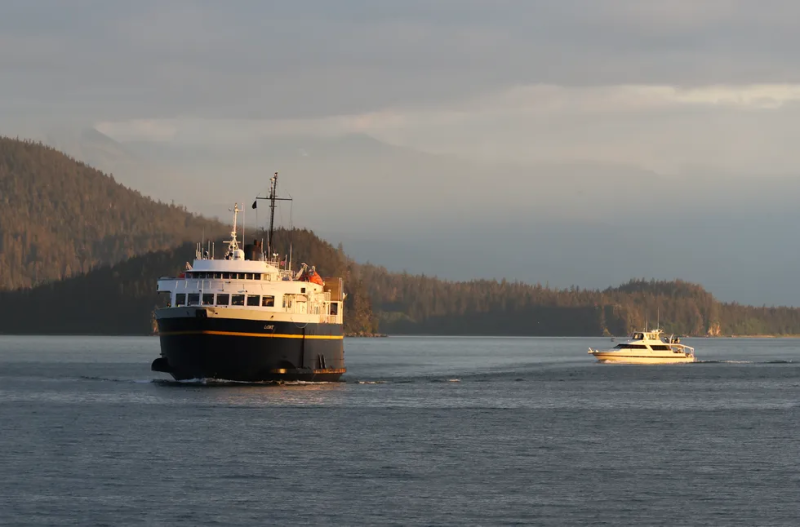
After drugs arrive in Anchorage, some shipments are driven to towns and others are smuggled on ferries and small planes bound for remote areas. Agents say they worry if they don't intercept shipments in Anchorage, there's less of a chance the drugs will be detected as they spread out across the state.
Alaska's land mass is so vast, it could stretch from Montana to Florida, but it doesn't have counties or sheriffs and only some areas have local police. That means state troopers are the primary law enforcement presence for much of the state and may end up patrolling an area the size of Rhode Island alone, giving an edge to cartel associates wanting to avoid detection.
"We're seeing addiction in villages with less than 500 people in them and as far up as Barrow," said Sims, head of the statewide drug enforcement unit.
Some drug shipments sent to Fairbanks, used by cartels as the northern hub, continued on to Barrow, now officially named "Utqiaġvik," which is the northern tip of Alaska on the Arctic Ocean. The small town hosts an annual festival of the Inupiaq Eskimos and is lauded as one of the top places to view the swirling emerald streaks of the aurora borealis or Northern Lights.
"Opioids can do catastrophic damage in those communities," Waddle said. "In those communities, people work together to survive," especially during harsh winters.
If five or six residents become addicted to drugs and aren't able to help hunt, fish and provide for the community, it creates a disparate impact, the FBI agent said.
Drugs reach even small, remote islands
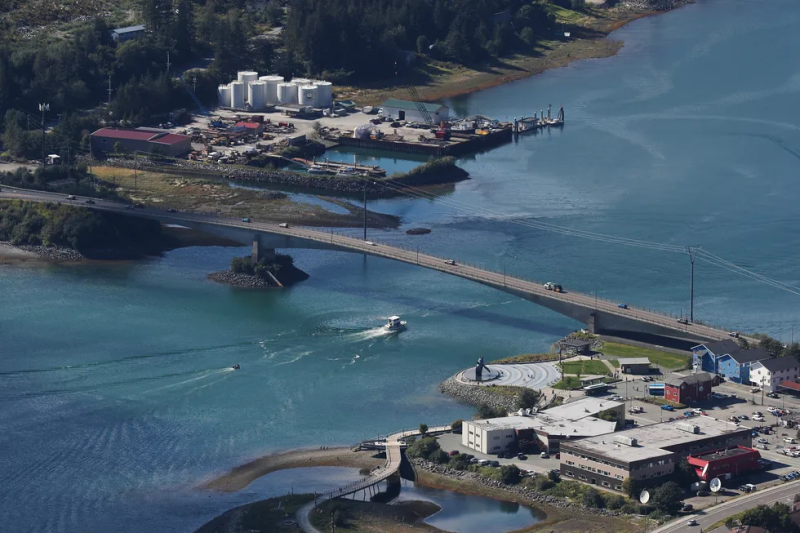
Alaska's capital, Juneau, is accessible only by plane or boat, and has become the drug hub for the state's southeast region.
Each day, throngs of tourists load onto enormous cruise ships, on planes and ferries to visit glaciers, fjords, national parks, mountains and lakes — while drug traffickers also exploit these transportation methods to drop off their products.
Once drugs arrive in Juneau, some go to local customers. Other shipments are destined for one of the many coastal islands and must be sent on small plane, passenger ferry, cargo ship or boat.
Juneau Police Lt. Krag Campbell said his department noticed an increase in fentanyl beginning about two years ago.
"Now, we're starting to see large quantities. We’ve seen an increase in overdose deaths killing community members."
Investigators have had some seizures of as much as 20,000 pills laced with fentanyl, he said. Nationwide, about 42% of pills tested for fentanyl contain a potentially lethal dose, according to data from the U.S. Drug Enforcement Administration.
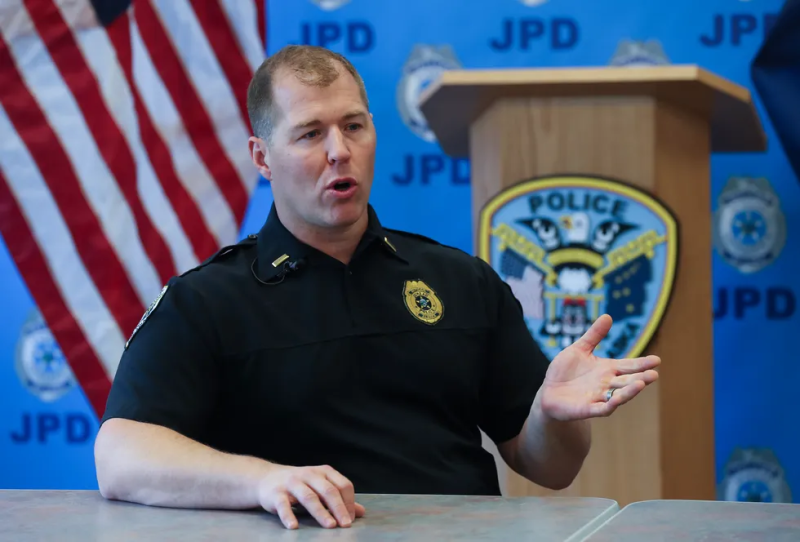
Investigators say drugs have reached the Aleutian Islands, which are sprinkled south of mainland Russia and mainland Alaska and mark a dividing line between the Bering Sea and the Pacific Ocean.
Fentanyl and other opioids also are ravaging small towns known for fishing and tourism, including Sitka on Baronof Island and Prince of Wales Island, home to Northern flying squirrels and part of the Tongass National Forest.
In an unusual case, a beach visitor found a large container of about a kilo of cocaine in December 2020 that washed up on Cannon Beach, between Anchorage and Juneau. The sandy beach, north of the mouth of Lost River, in Yakutat, is known for its surfing, said Campbell, who heads the Southeast Alaska Communities Against Drugs task force of local, state and federal investigators.
In the same month, a second package with another kilo of cocaine washed up on a Sitka beach, a 40-minute plane ride south of Juneau that serves as a popular tourist stop.
"We're not sure if it came in on a boat that capsized or did a plane bring it and drop it and something happened?" said Campbell, who said he isn't sure of the shipment's intended destination.
It's also possible drug traffickers on a boat became worried about being detected by the U.S. Coast Guard or other investigators and dumped it on purpose, he said.
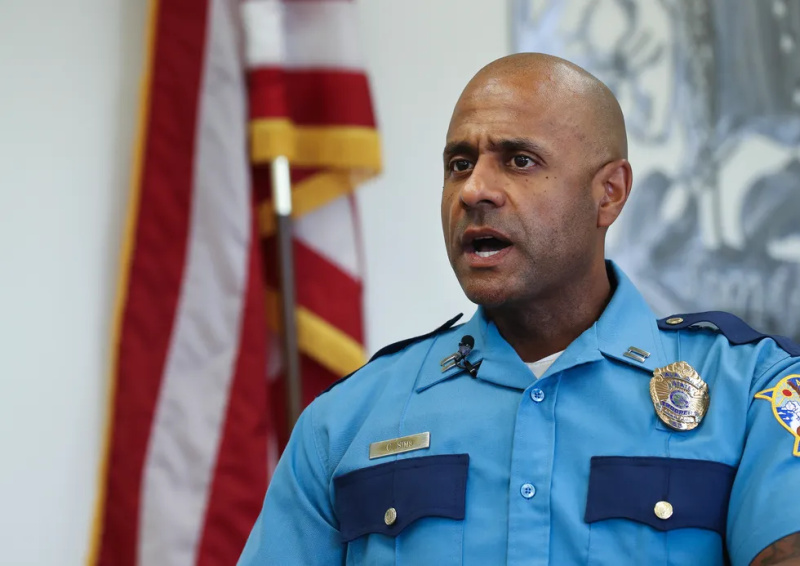
Investigators are also concerned about drugs hidden on small planes. In Alaska, about one in every 80 residents is a pilot, Klugman said. Driving around Anchorage, you can spot planes parked in backyards.
Drugs can be smuggled on these small airplanes, with or without the pilot's knowledge.
There typically isn't any screening of the cargo or passengers, because smaller airports don't have TSA checkpoints and police on standby.
Sims, the Alaska state trooper, said anytime he boards a plane, he automatically watches other passengers, wondering what they might be bringing into his home state.
'Opioids will find a way there'
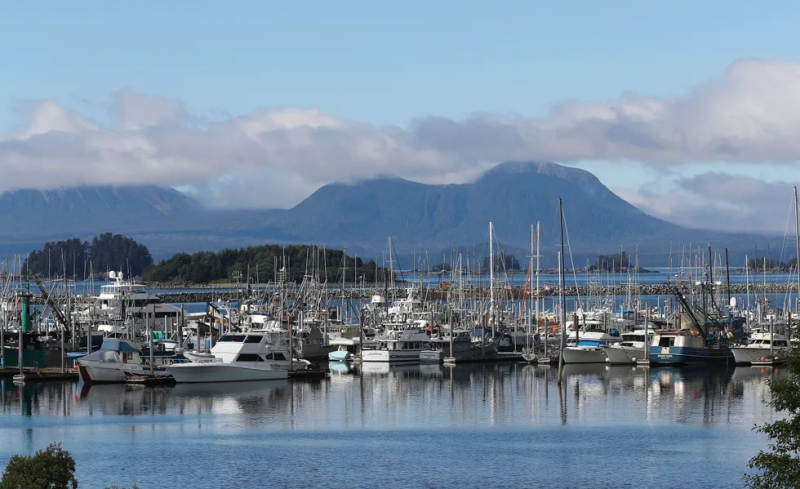
Standing by a bustling boat dock in Sitka on a recent sunny day, local resident Denise Damewood discussed her mission to save lives through "Project Gabe," by increasing access to naloxone, a fast-acting opioid antidote.
It's part of her job as a nurse at the Sitka Public Health Center, but it's also personal. Her 30-year-old stepson, Gabe Johnston, who once worked in Alaska's seafood processing industry, died last year from a fentanyl overdose.
"Whether you live in Sitka, Alaska — population 8,000 — or New York, opioids will find a way there," she said.
Damewood installed a red box containing naloxone and printed instructions on a post at the dock, which can be used by fishermen in an emergency. She also has convinced some boat captains to carry waterproof kits on boats.
"Gabe loved water, to fish and to hunt," said his father, Gary Johnston. "He was a good kid, just made some poor choices."
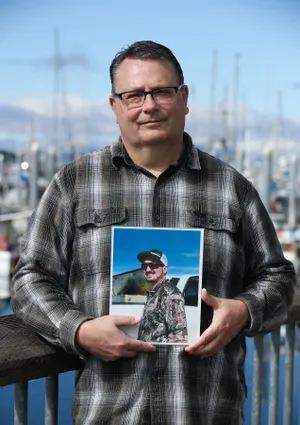
Johnston said he has seen his son's texts soon before his death, including ones where Gabe asked for reassurance from the drug dealer that the pills he bought weren't laced with fentanyl. The dealer, who may or may not have known the truth, claimed they were safe.
The rescue kits include fentanyl testing strips, which can be used by those struggling with addiction to screen for fentanyl, as well as educational materials.
Damewood has led the effort to get 2,000 kits to residents throughout the state and some to Washington and Canada. And she's not slowing down.
"We went from the fishing industry to hotel industries to the ferry system to cruise ships and (gold) mines," she said.
She's convinced several employers, some of whom hire up to 500 seasonal employees at a time, to discuss the kits during orientation.
Residents can even get a naloxone, or Narcan, kit at the Sitka Public Library.
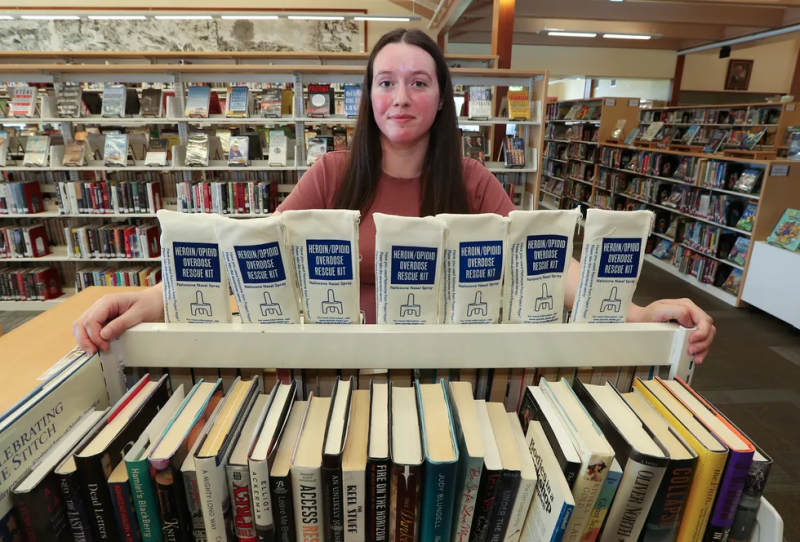
Jessica Ieremia, the library director, said her brother battled addiction. He ultimately died of cancer, but his wife overdosed and died in Washington in February on the day of the funeral.
Ieremia rushed to the victim, found on the bathroom floor, but was unable to resuscitate her.
"I kept thinking, 'If I had a Narcan kit, I could have saved her,'" the library director said.
The Southeast Alaska Regional Health Consortium, known as SEARHC, has opened opioid addiction treatment centers in Sitka and downtown Juneau, offering medication-assisted treatment and behavior therapy.
Dr. Corey Cox, a Kentucky native who went to medical school in Louisville, oversees the treatment programs and said a third center will open within weeks on the more isolated Prince of Wales Island.
"The people most impacted by addiction could live in a village," Cox said. "That's been the biggest barrier for our patients.
"We're trying to figure out how to bring these services to every little area."
GETTING HELP:
The Substance Abuse and Mental Health Services Administration offers a free and confidential 24-hour national hotline 800-662-4357 providing information on treatment options.
Naloxone kits, also known by the name brand Narcan, are available at many pharmacies and through most states' health departments. In Alaska, you can learn how to get the life-saving kits by sending an email to projectGabe@alaska.gov.
A list of other resources in others states is available at the National Harm Reduction Coalition website, offering information and a "naloxone finder."
Disclaimer: The copyright of this article belongs to the original author. Reposting this article is solely for the purpose of information dissemination and does not constitute any investment advice. If there is any infringement, please contact us immediately. We will make corrections or deletions as necessary. Thank you.





